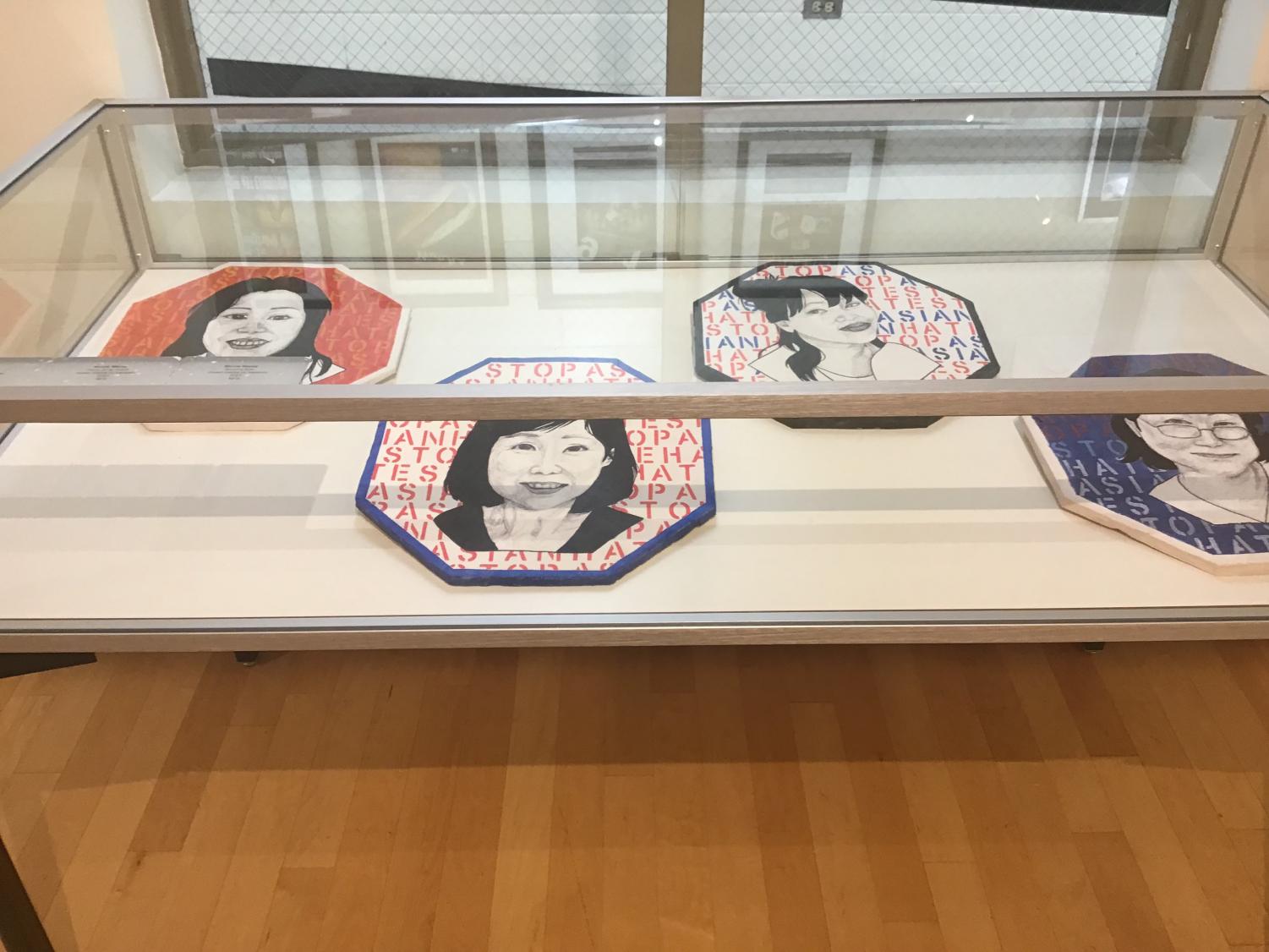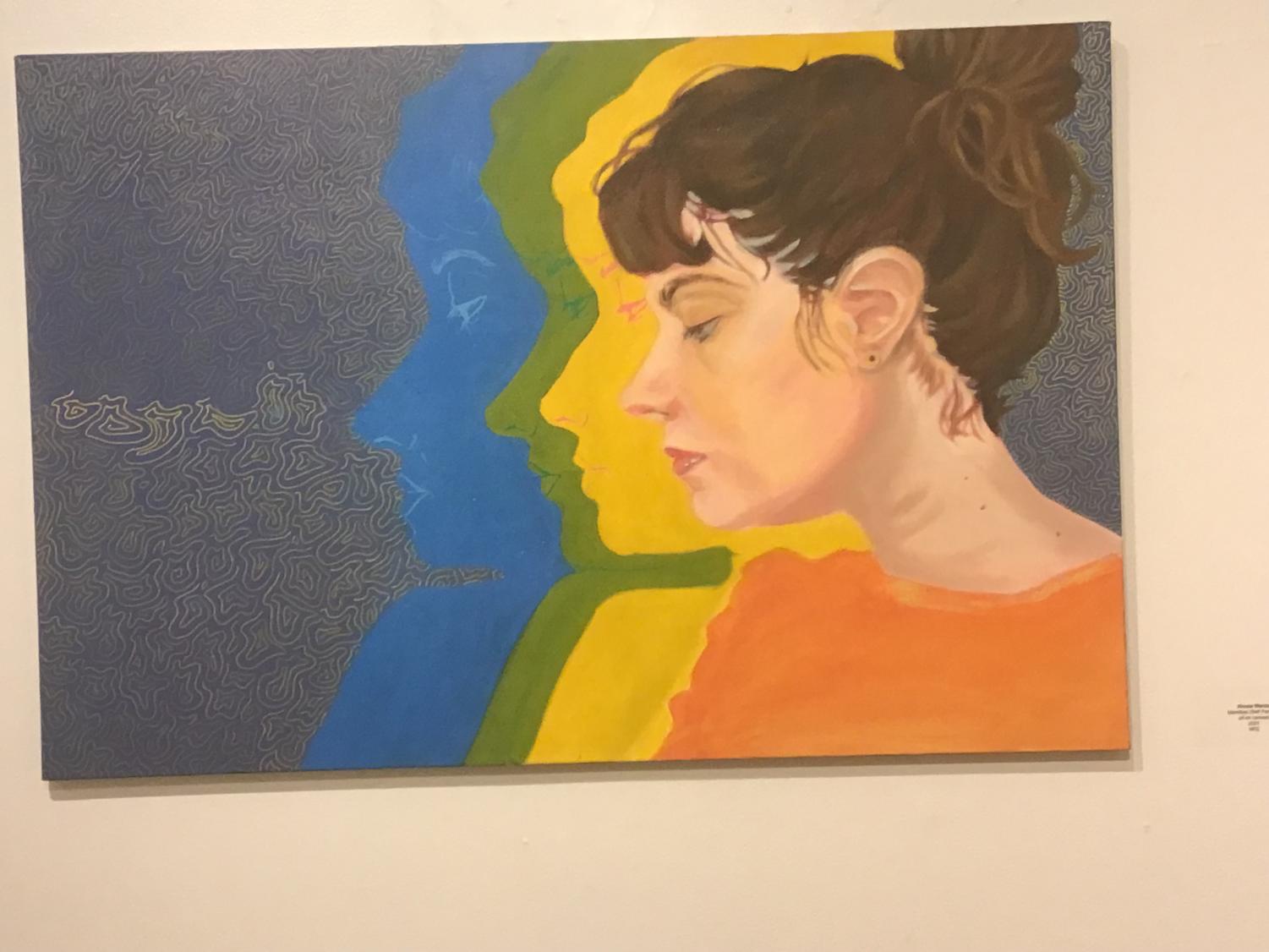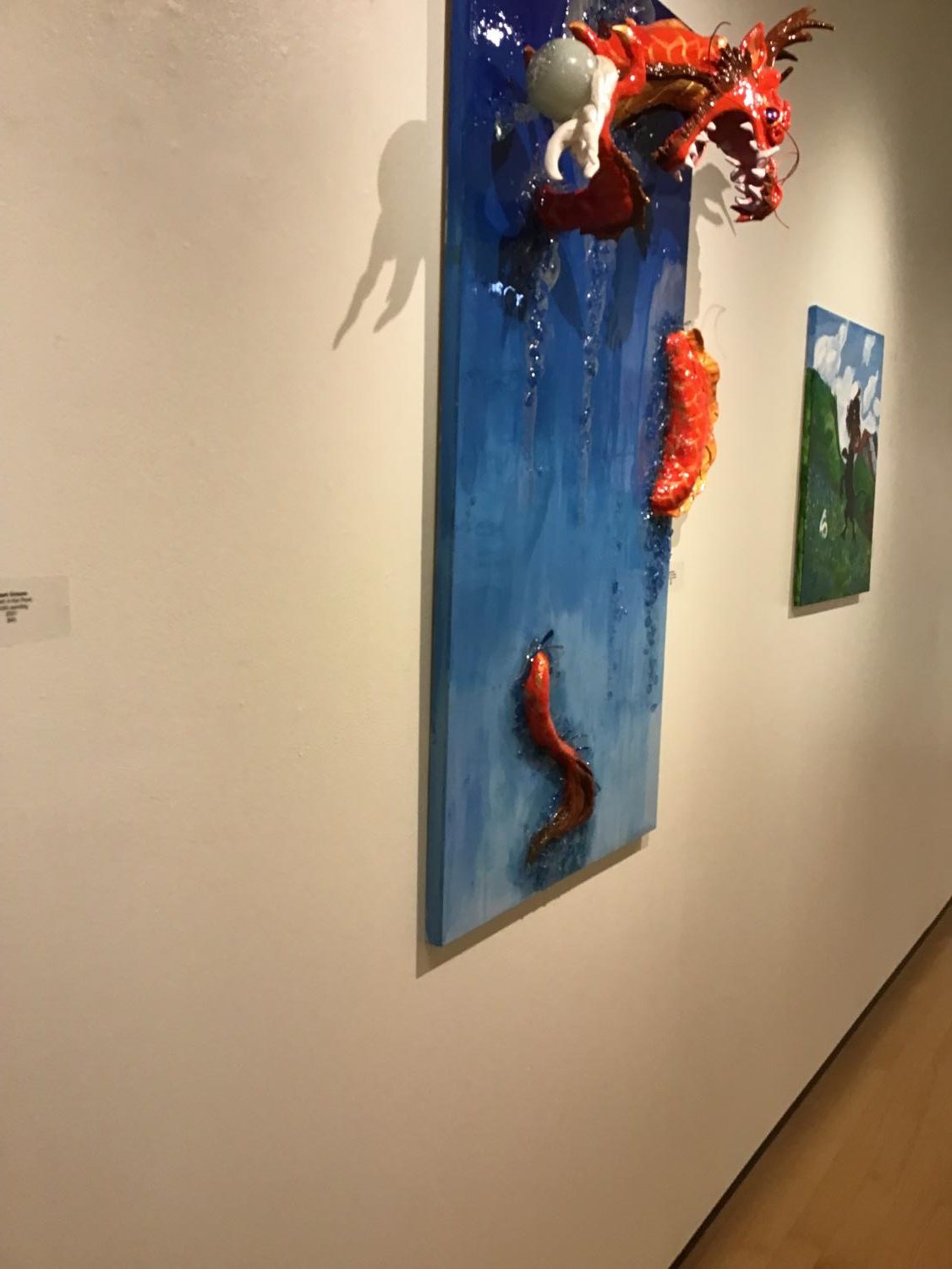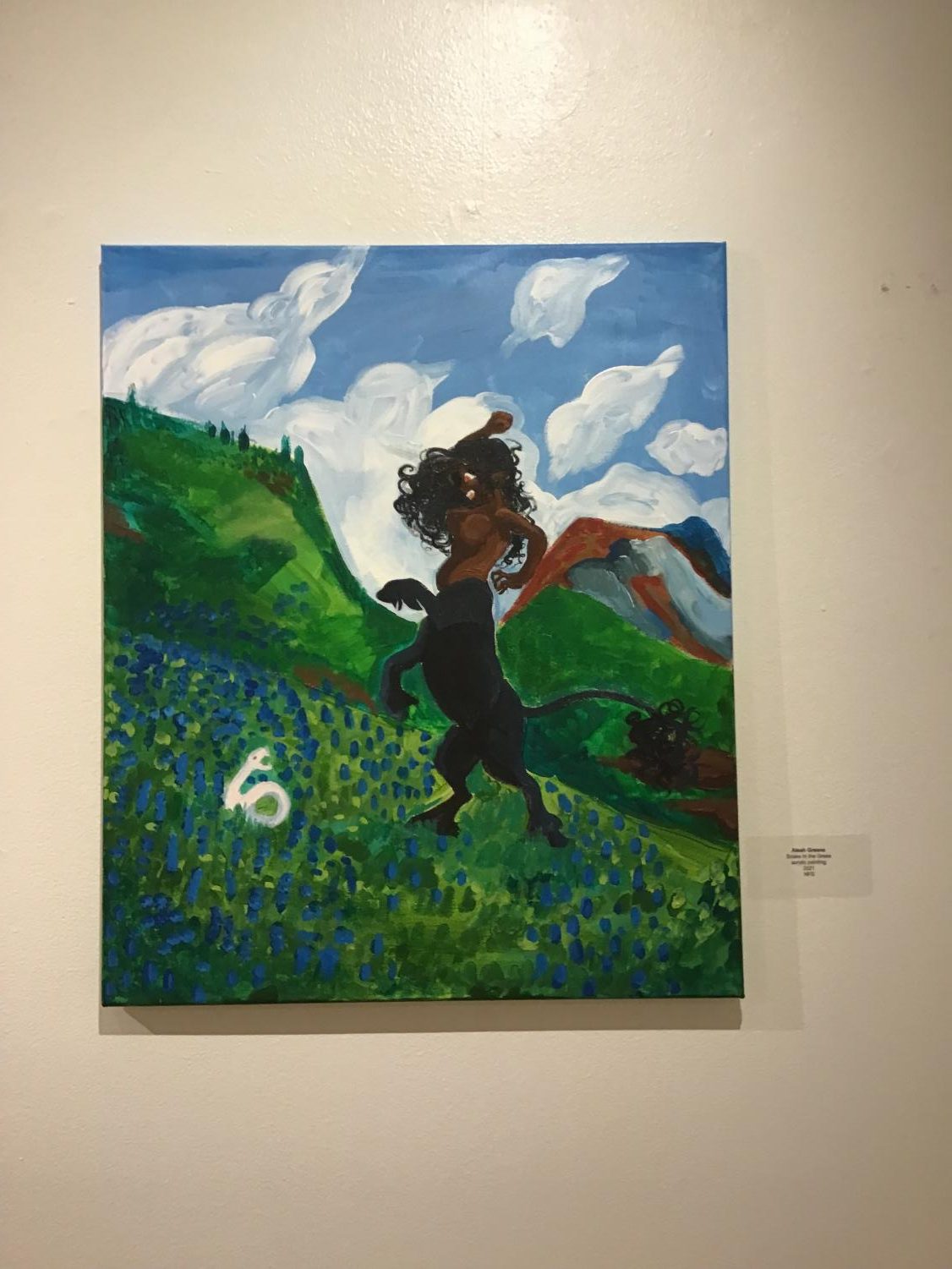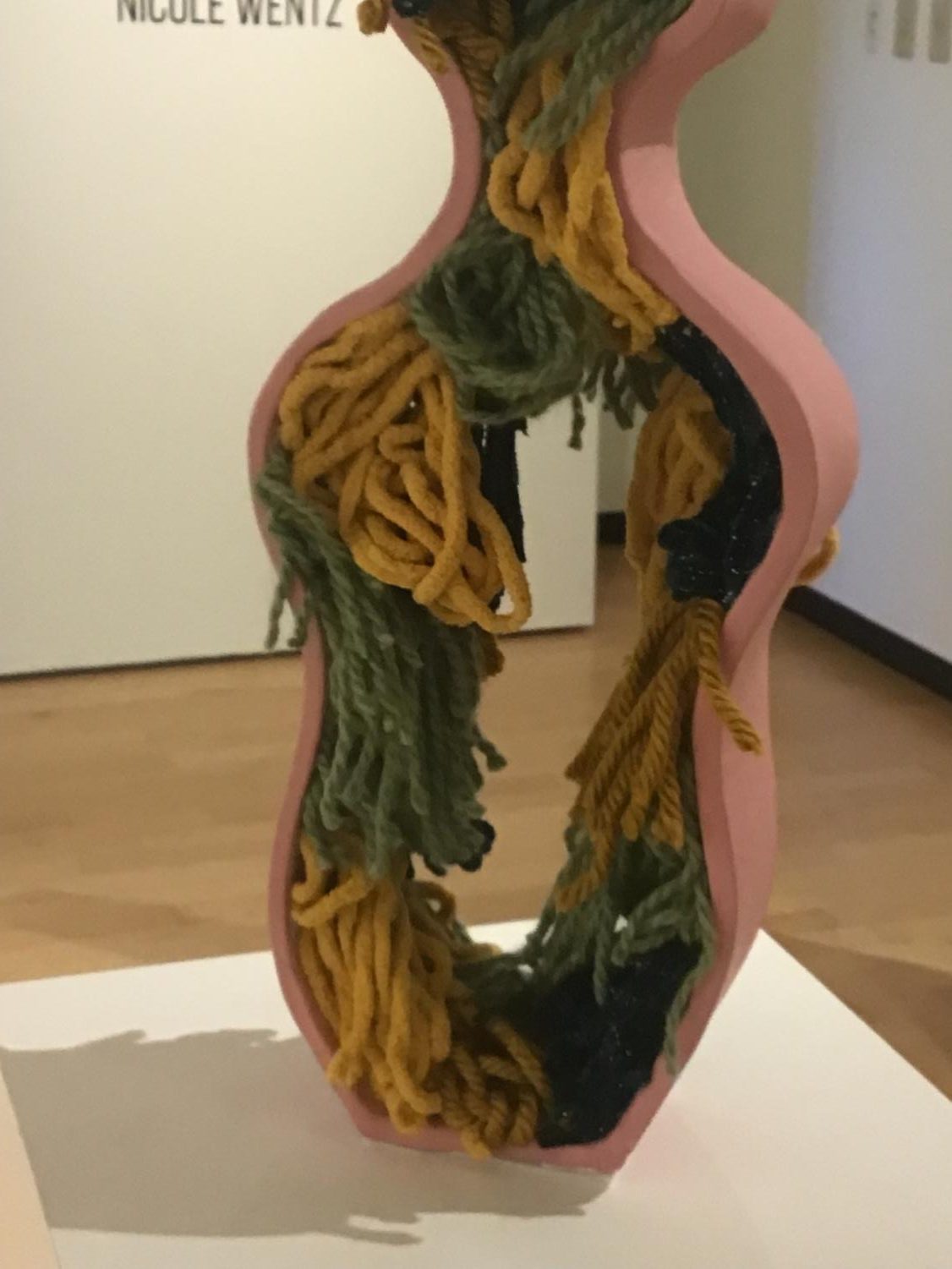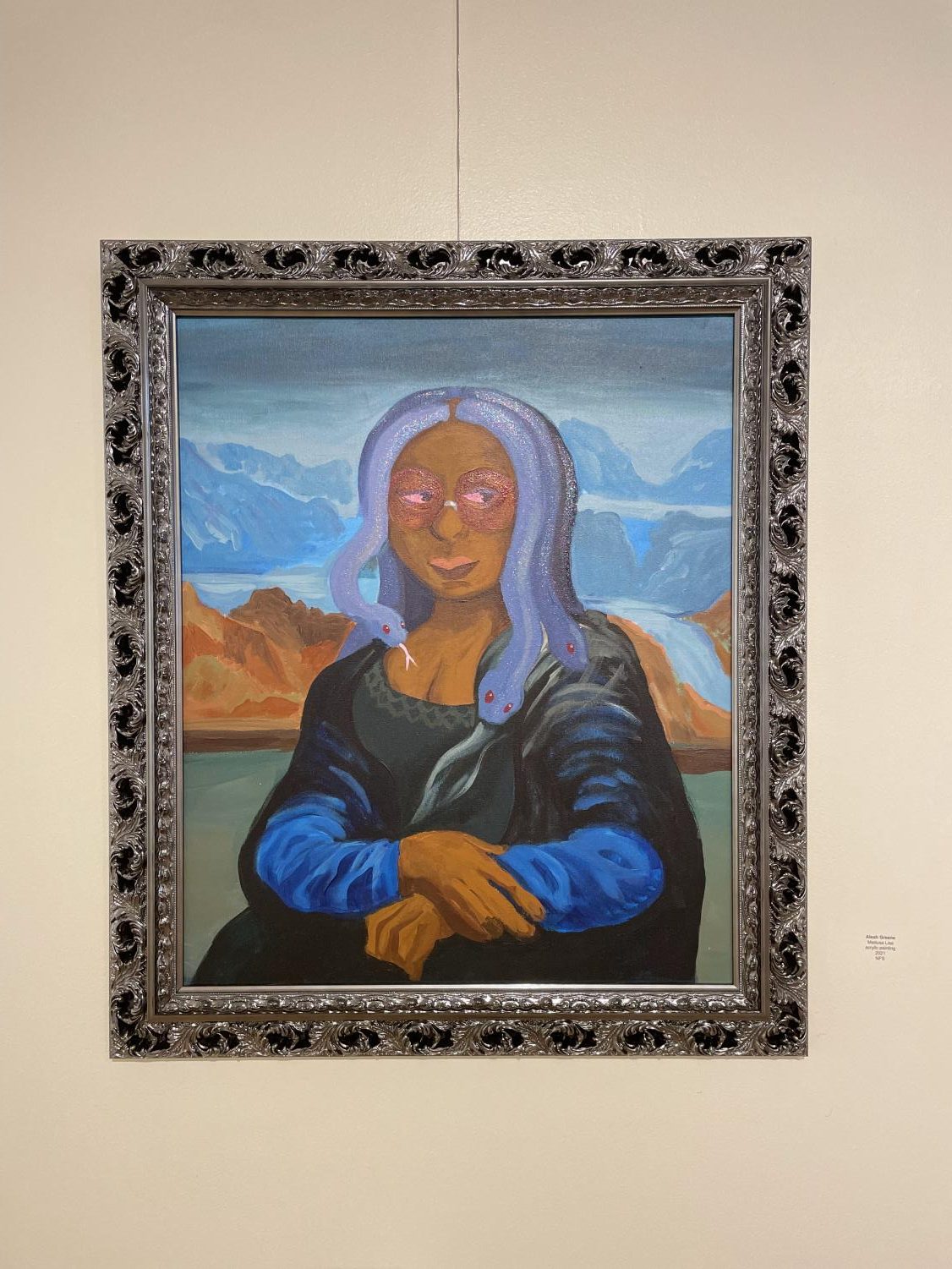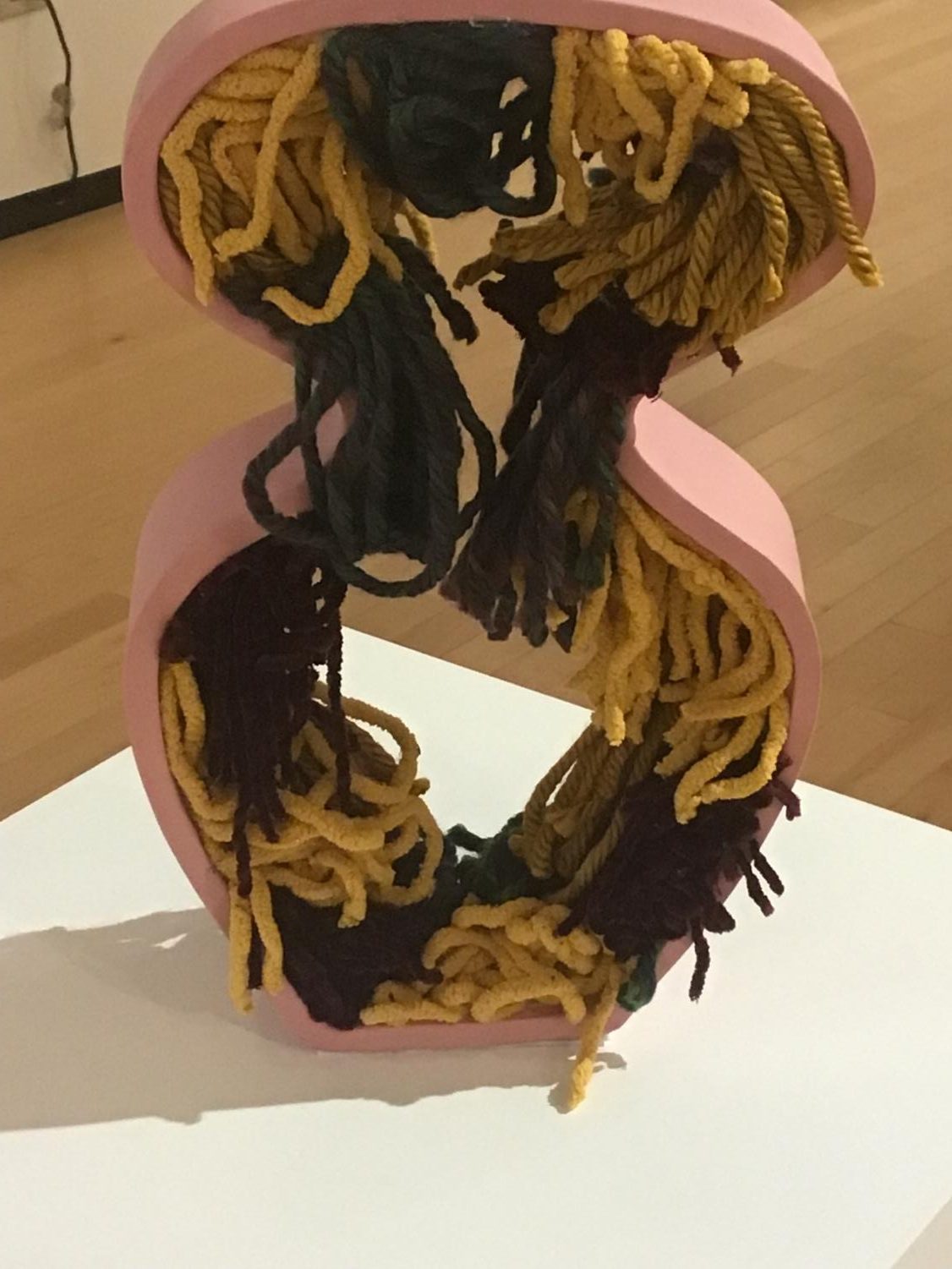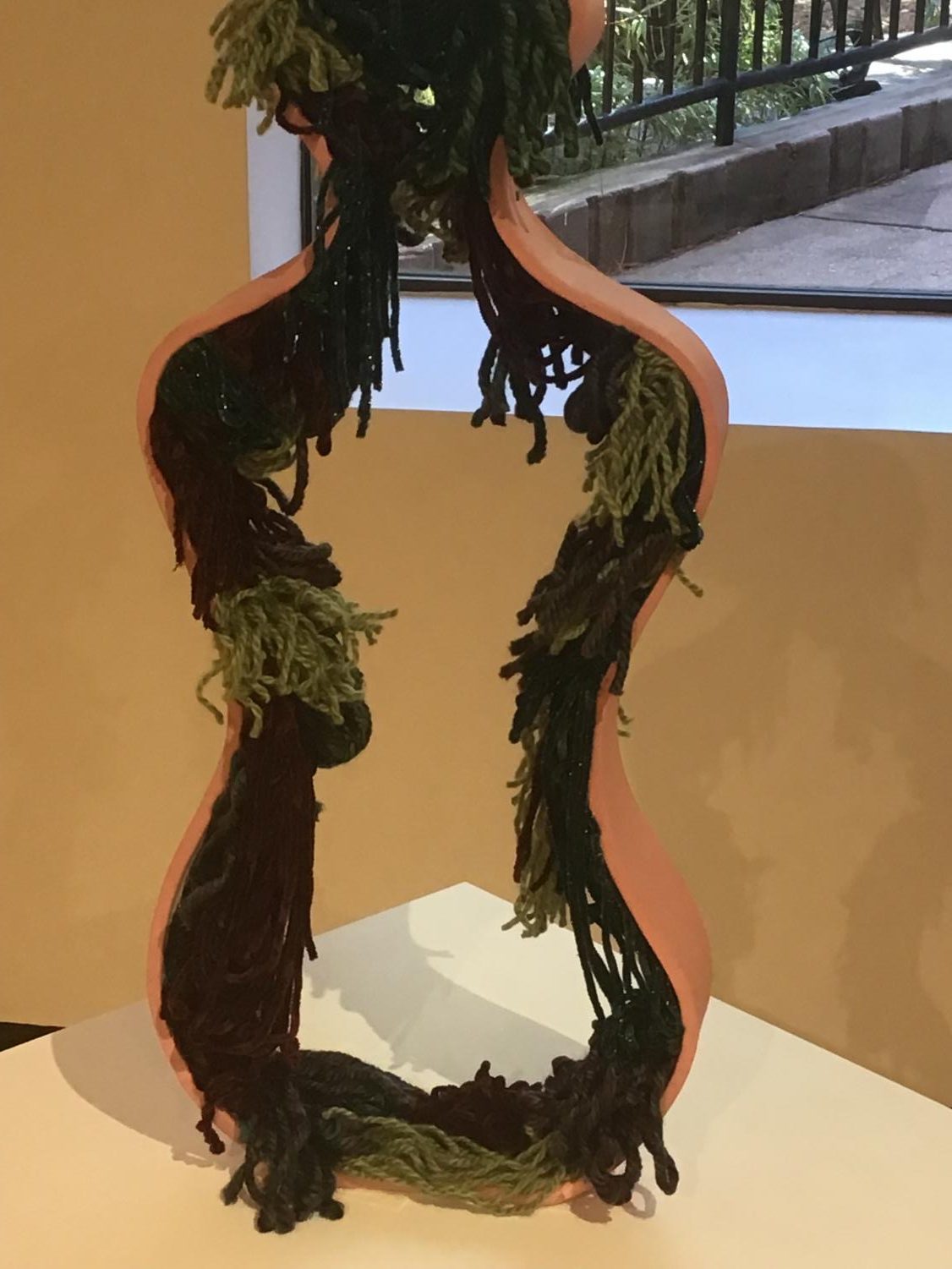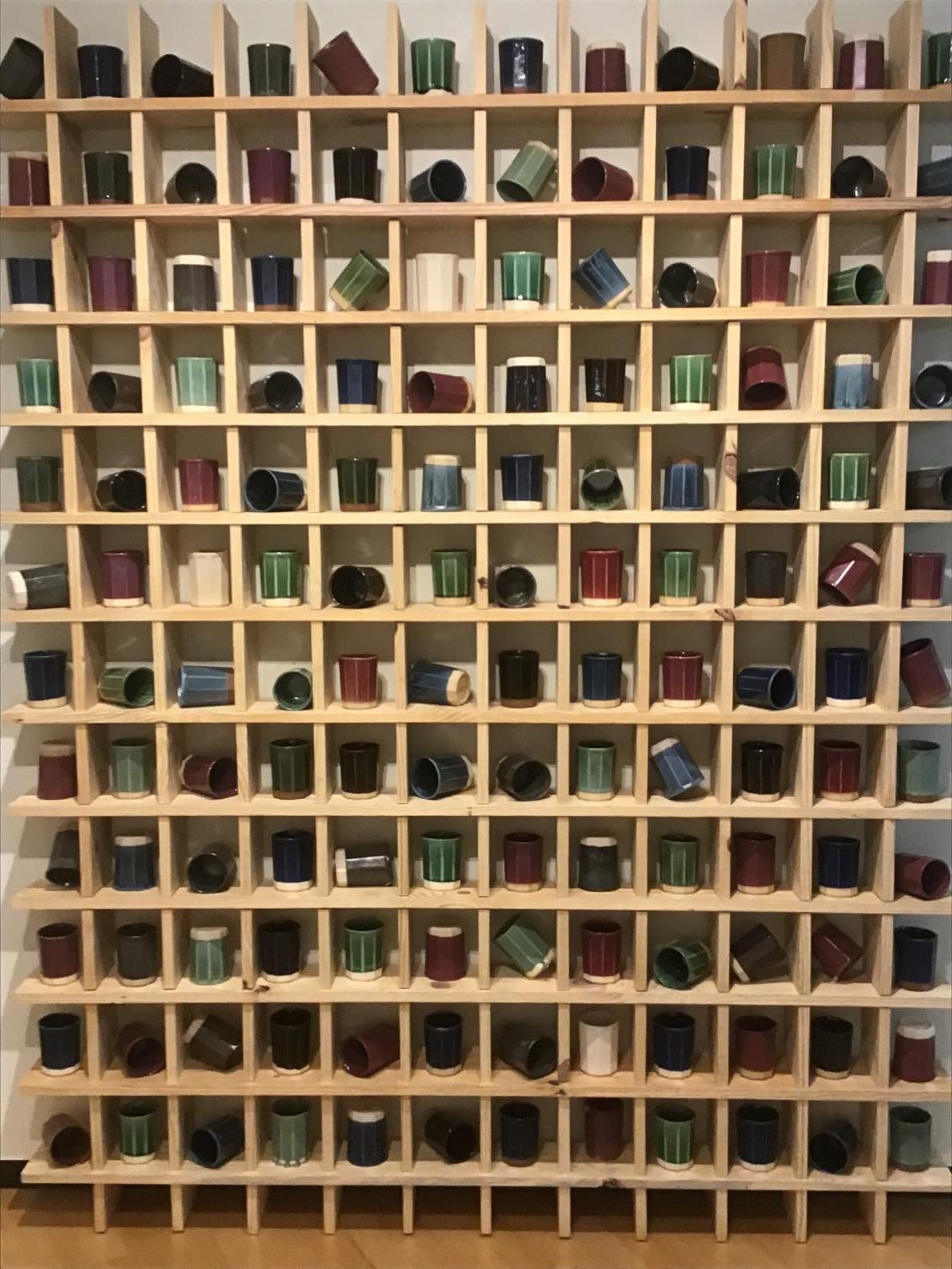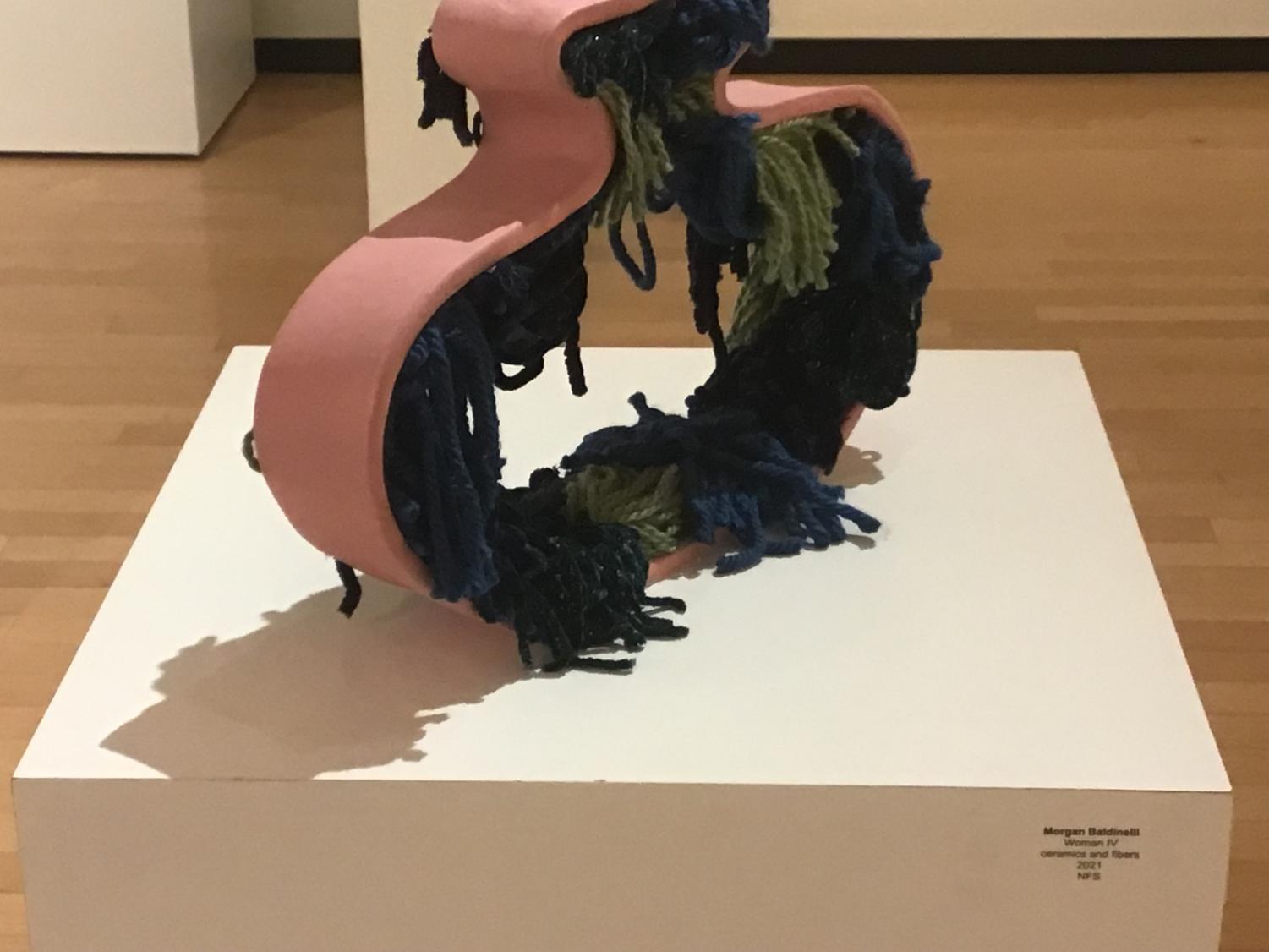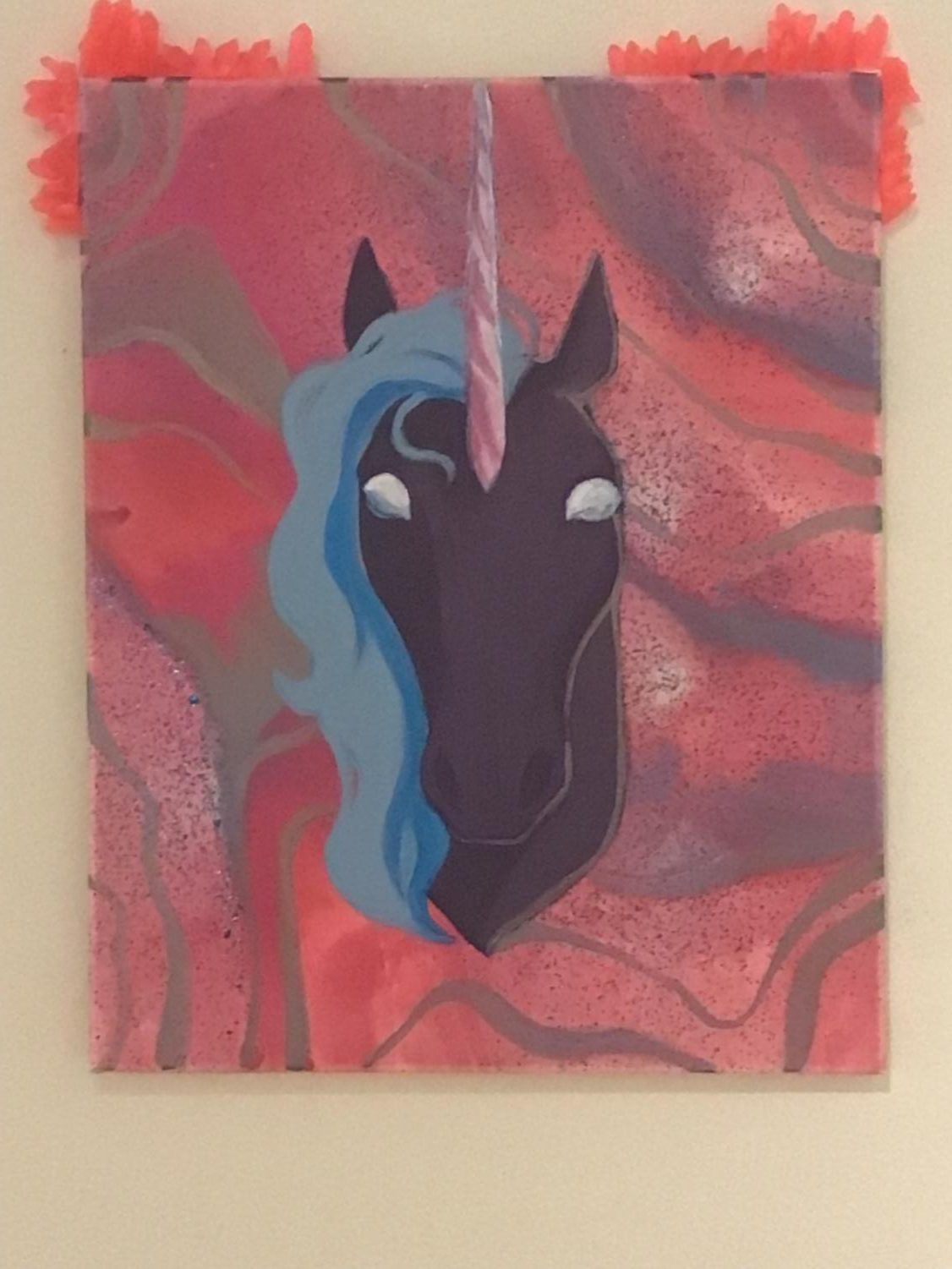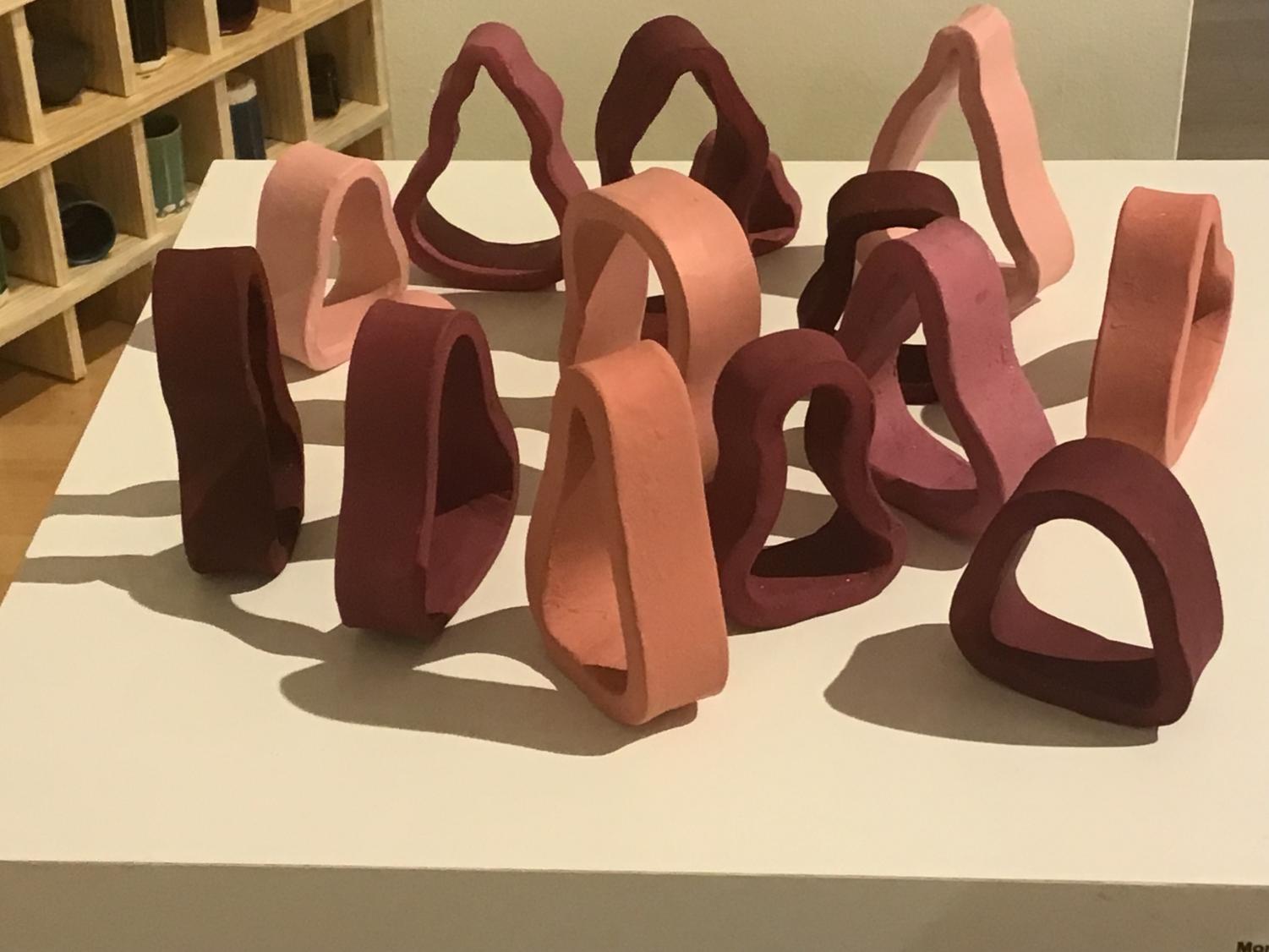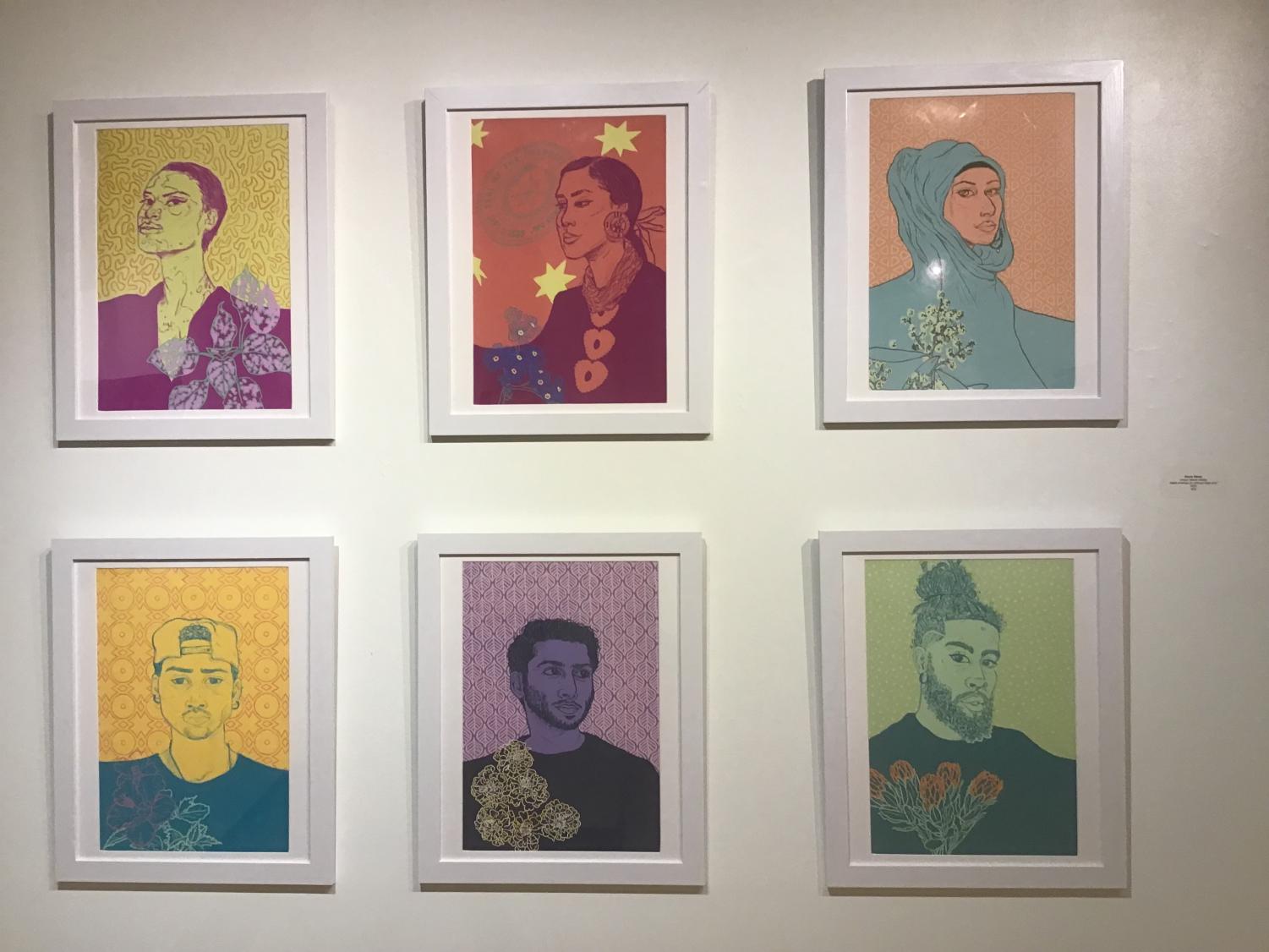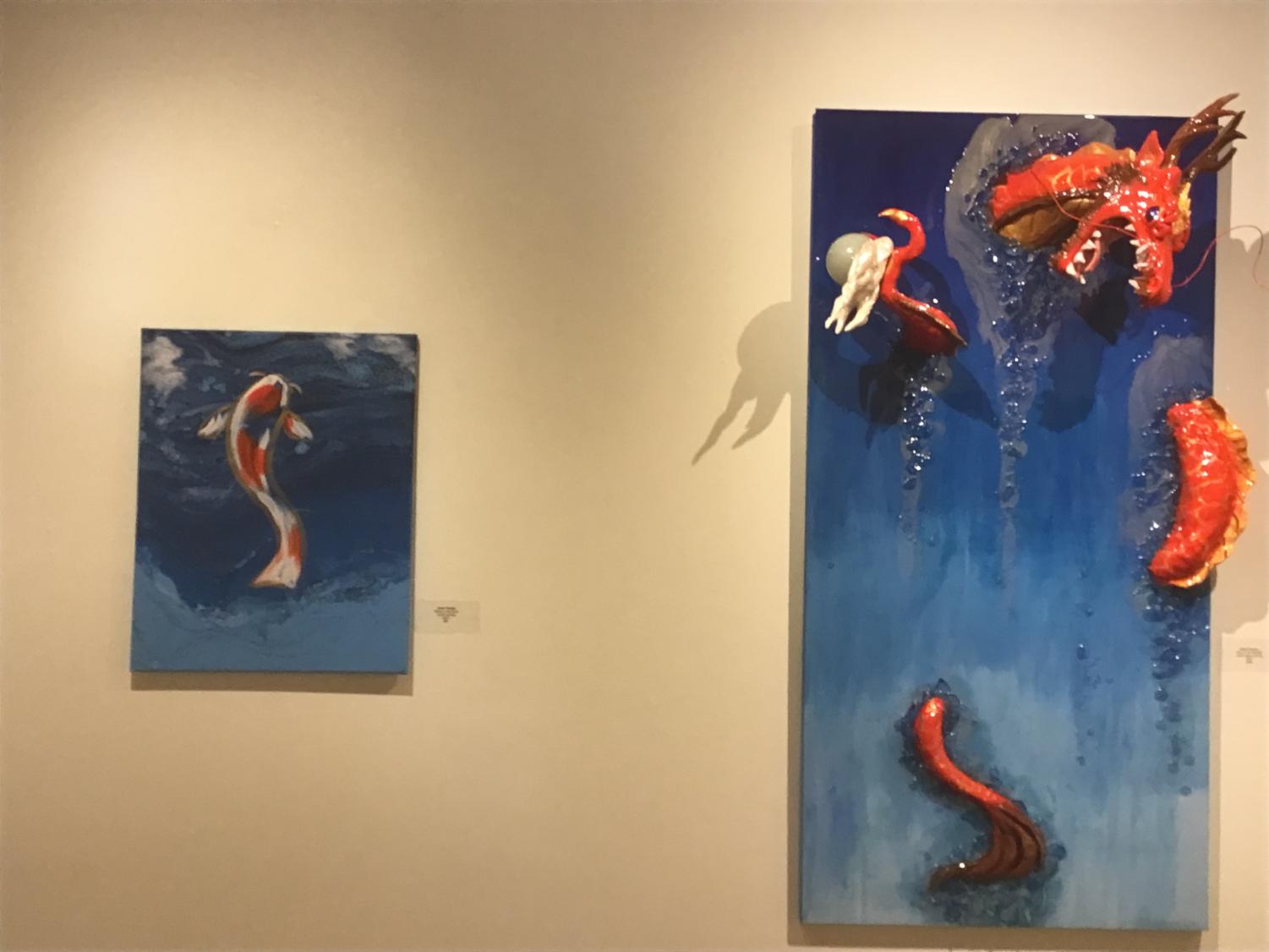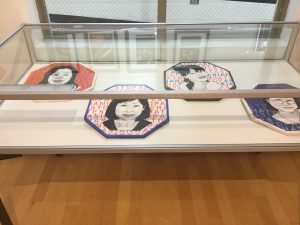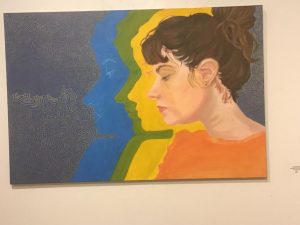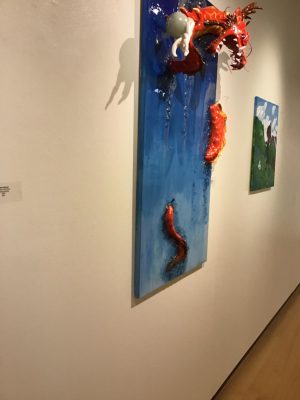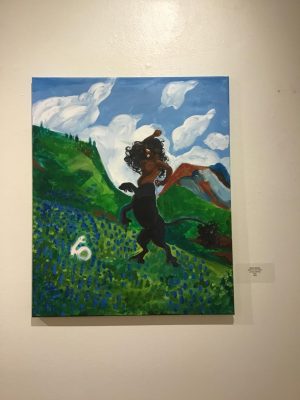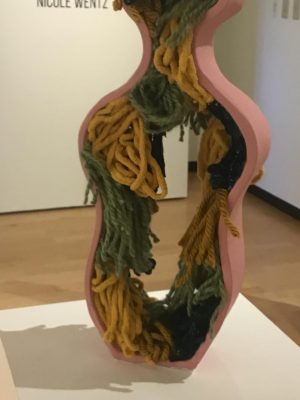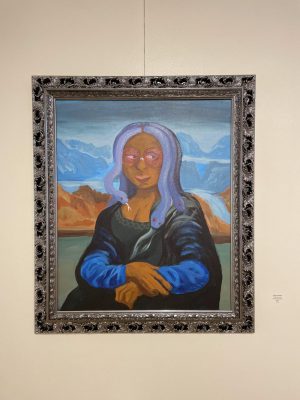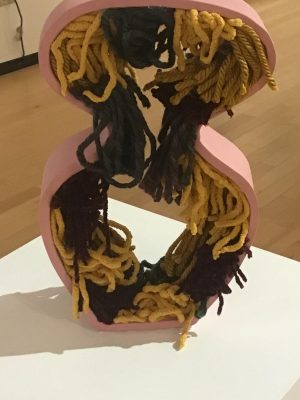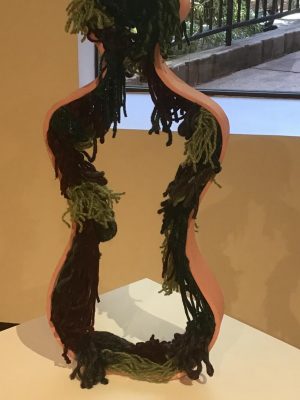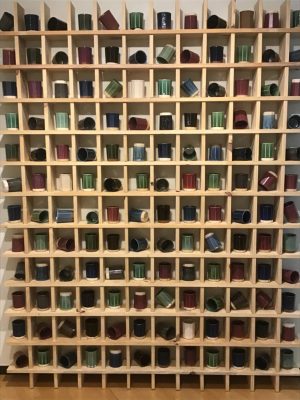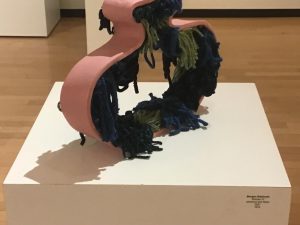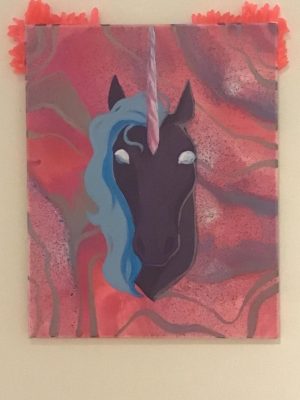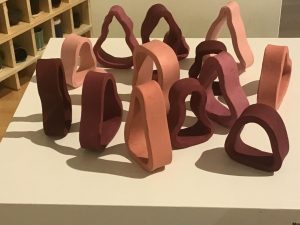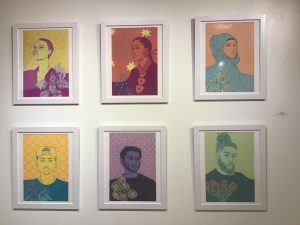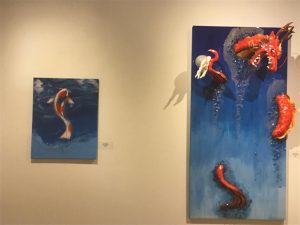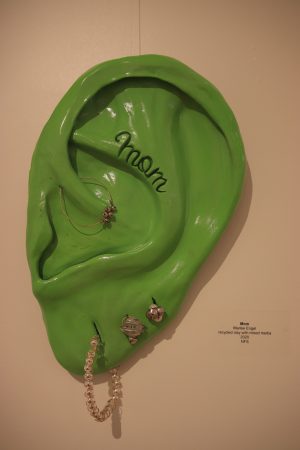Out with the Old, In with the New
The artists featured in “Change: Subject to Change” create modern takes on classic subjects
Blue snakes that shine from a light coating for glitter, dark skin instead of pale skin, and a background with blue skies and brown mountains. The piece called “Medusa Lisa” is how one artist, Aleah Greene, reimagined Leonardo Da Vinci’s Mona Lisa.
Greene used one of the duplicates of the portrait that one of Da Vinci’s students created to get a better understanding of the original colors in the piece. Using an experimental technique called sfumato, which in Italian means “evaporated and varnished,” Da Vinci applied so many coats of varnish, the painting started losing its original colors as early as the 17th century, not even a hundred years after the painting was complete.
Like Da Vinci, Greene also employs experimental techniques in her paintings. She gets a lot of her inspiration from Instagram and YouTube. Greene also uses a lot of glitter in her paintings.
“I already liked glitter,” Greene said. Now that it’s a current trend, it gives her an excuse to use more, though she said that she doesn’t want to “smack people with glitter.” Greene mixes water, glue, and glitter together to make glitter glue that she can brush on rather than applying the glue first, adding the glitter and then having the glitter “fall off” and make a mess.
One piece called “Glint,” which she described as “very 12-year-old girl,” depicts a unicorn head with a pink background and pink and purple glow in the dark glitter.
Greene’s entire exhibit makes the viewer look at commonly known stories or artwork in a different way.
“The works I make feature allusions to multiple mythologies from all over the world with a modern twist to distinguish them from older masterworks. Using mythical themes and symbolism my paintings often feature women of color, feminine theming, or materials that are associated with crafts. The reason I chose to combine these narratives is the fact that the majority of artworks that are taught in the artistic ‘canon’ are usually made by, for lack of better words, a white man,” Greene said in her artist statement.
In her piece “Snake in the Grass,” she created Eve from the Fall of Man as a centaur standing on her hind legs about to attack the snake.
Greene created two pieces, “Splash in the Pond” and “Roar in the Waterfall” which depict the legend of a koi fish who swam to the top of the waterfall, so the gods turned it into a golden dragon.
The dragon is the only 3D work in her collection. She used clay to make the pieces of the dragon that stick out from the wooden canvas, which she made herself using plywood and two-by-fours. Greene used UV resin to harden the pieces of the dragon and the glass that adds texture to the water to the canvas. UV resin hardens quickly after light is applied and regular resin takes three days to completely harden.
Across the room, Nicole Wentz uses real people as inspiration for her works. Usually, she chooses people who the public knows, such as some of the victims of the spa shooting in Atlanta. “Each work either tries to express their identity, culture, personality, or even issues the individual faces,” Wentz said.
She created an entire display case full of stop-sign shaped canvases with the faces of some of the victims of the shooting whose pictures had been released to the public. She titled each piece after the person in it. “The stop sign is the symbol used in a lot of the protests earlier this year,” Wentz said to explain her use of the shape.
In her piece called “Untitled,” which is of a South African woman, Wentz chose someone she did not know, so she covered most of the woman’s face. Only the mouth, cheek bones and hair make the figure recognizable as human. The colorful buckeye butterfly, which blends into the background, sits on the figure’s face, obscuring her facial features.
Her “Unique Beauty Series” depicts six individuals from different backgrounds with a plant in the foreground of each picture. “I choose plants that reflected each person,” Wentz said. “For the first one, the woman has vitiligo, and so I choose a plant that has spots in it to resemble her condition.”
Wentz’s self-portrait “Identities (Self-Portrait)” was also inspired by her culture, specifically the parts of it that she does not often acknowledge. “Even though I look very fair-skinned, I’m part Hispanic,” she said. “I used colors to show parts of my identity that I feel less connected to because I didn’t grow up in that culture,” Wentz said.
She painted a realistic picture of herself looking to the left and coming out from the portrait are three portraits of part of her face profile in yellow, blue, and green almost as if those faces are any extension of her original portrait.
Before viewers even enter the Fine Arts Gallery, “Cup Tests” by Morgan Baldinelli appears. It is a wooden shelving unit with dozens of ceramic cups.
“The ones that are tilted or upside down are not food safe,” Baldinelli said. Baldinelli wrote her honors thesis, which is available on Digital Commons, on “Cup Tests.” She used seven separate tests to verify the food-safety of 140 ceramic cups and test tiles with 140 different combinations of glazes.
“The results showed that sixty-seven out of the 140 variations are food-safe, the majority, twenty-six of the sixty-seven, from John Britt’s Spearmint glaze; conversely, John Britt’s Licorice only had eight variations that were food-safe, five of which were the control cups with no rutile added,” Baldinelli said.
“Cup Tests” sets the tone for the rest of Baldinelli’s series because it puts the viewer in the mind of houseware and the chores that accompany it, which have been traditionally women’s work.
When viewers enter the Gallery, Baldinelli expands on this theme, first with body shapes used to describe women’s clothing and body types such as an apple and an hourglass.
These body shapes depicted in Woman I, Woman II, Woman III, and Women IV share similar features with the markers of good ceramic shapes, according to Baldinelli. “Thick lip, thin or narrow neck, small feet, wide hips or sloping shoulder, they’re also called,” Baldinelli said.
“Start Young” consists of smaller versions of the larger creations. This is to symbolize that girls are told what expectations they should meet as a woman from an early age.
As soon as they can stand up in a play kitchen or hold a baby doll, those stereotypes are reinforced because those activities are pushed on the girls whether they want them or not.
“These little comments you have as a child, they shape and push you into this little box,” Baldinelli said.
Students can view the art work in the Fine Arts Gallery every weekday from 8 a.m. to 5 p.m. until Nov. 19.


